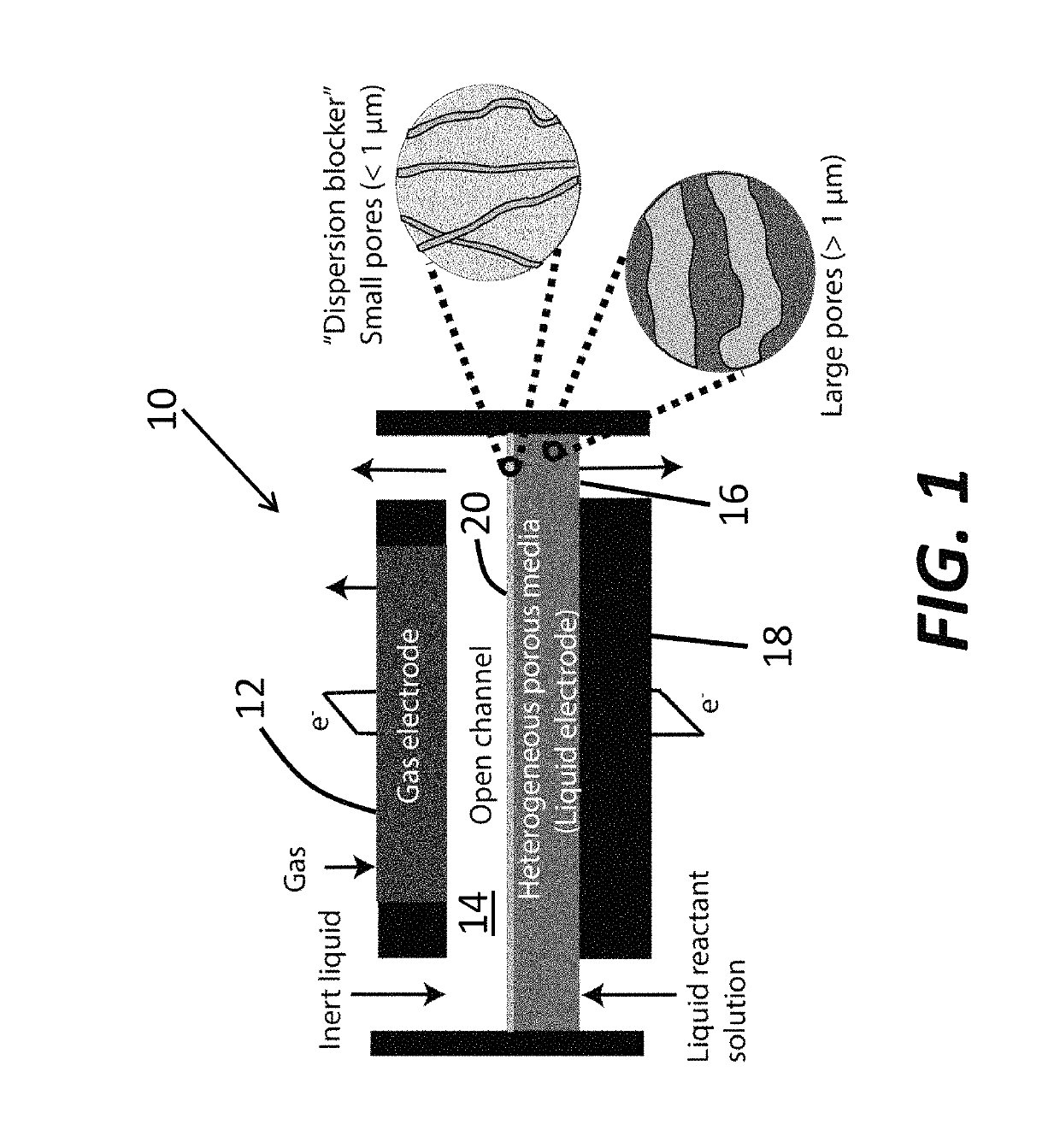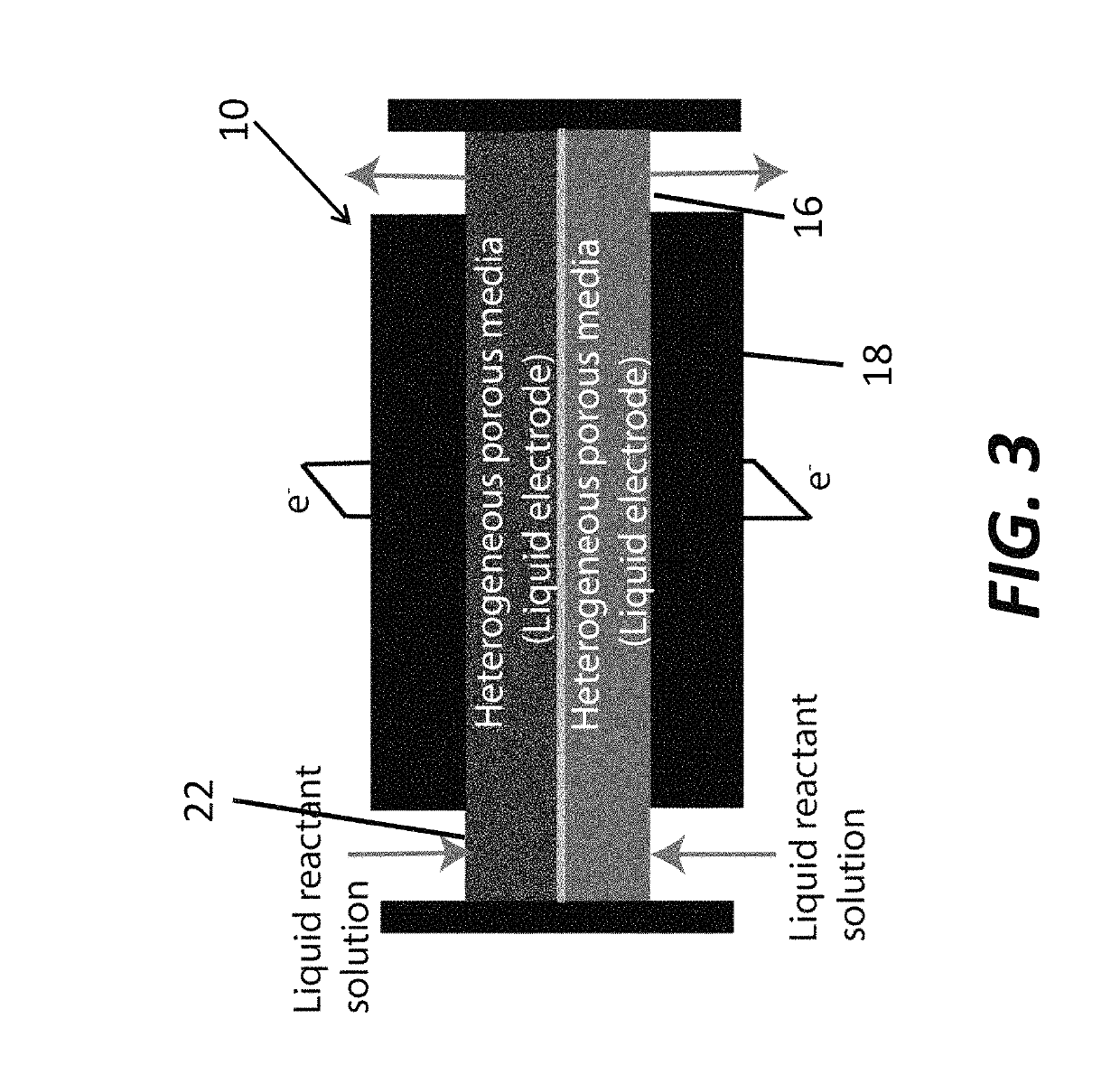Flow battery with dispersion blocker between electrolyte channel and electrode
a technology of dispersion blocker and flow battery, which is applied in the direction of indirect fuel cells, cell components, electrochemical generators, etc., can solve the problem that no prior flow battery system has been disclosed that can achieve stable closed-loop cycling, and achieve the effect of maximizing pressure drop
- Summary
- Abstract
- Description
- Claims
- Application Information
AI Technical Summary
Benefits of technology
Problems solved by technology
Method used
Image
Examples
Embodiment Construction
[0022]The present invention is a flow battery with porous electrodes that uses heterogeneous porous media to comprise a liquid flow-through electrode and does not require an ion exchange element to enable cyclable energy storage and to reduce mixing of reactant streams. The present invention is thus a departure from prior art flow batteries that use homogeneous porous media for liquid electrodes and / or heterogeneous porous media only for gas electrodes. Further, our battery enables two or three-dimensional laminar flow, a departure from previous battery systems which are either one-dimensional (the most typical) and three-dimensional chaotic flow batteries.
[0023]With reference now to FIG. 1 a flow battery 10 includes a porous gas anode 12, an open electrolyte channel 14 and a liquid cathode 16 made of a heterogeneous porous medium. The porous electrodes 12 and 16 may be made of porous carbon, such as carbon paper, carbon aerogels, carbon nanotube mats or porous graphene. A graphite ...
PUM
| Property | Measurement | Unit |
|---|---|---|
| diameter | aaaaa | aaaaa |
| pore structure | aaaaa | aaaaa |
| conductivity | aaaaa | aaaaa |
Abstract
Description
Claims
Application Information
 Login to View More
Login to View More - R&D
- Intellectual Property
- Life Sciences
- Materials
- Tech Scout
- Unparalleled Data Quality
- Higher Quality Content
- 60% Fewer Hallucinations
Browse by: Latest US Patents, China's latest patents, Technical Efficacy Thesaurus, Application Domain, Technology Topic, Popular Technical Reports.
© 2025 PatSnap. All rights reserved.Legal|Privacy policy|Modern Slavery Act Transparency Statement|Sitemap|About US| Contact US: help@patsnap.com



